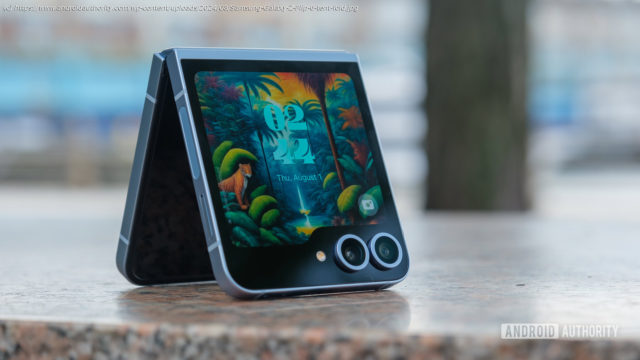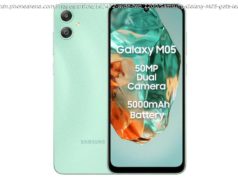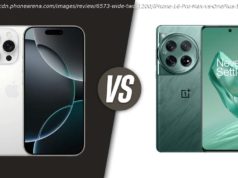Despite enjoying what Motorola’s been cooking with its Razrs, I see why people love the Galaxy Z Flip 6. Find out why in my review.
I don’t usually come into a review expecting to be underwhelmed — especially not when it’s a foldable flip phone, my favorite flavor of Android experience — but that’s exactly what happened with Samsung’s Galaxy Z Flip 6. As much as I liked previous generations of the original reborn flip phone, I’ve been more impressed by Motorola’s Razr Plus line in recent years and figured that Samsung wouldn’t win me over unless it made a few key changes to its sixth-generation flip phone, especially after a $100 price hike over the Galaxy Z Flip 5.
Since heavily testing the Galaxy Z Flip 6, though, I’ve begun to understand why Samsung didn’t make those sweeping changes. I’m realizing that maybe it’s not a step towards perfection but a refinement of a clamshell-style foldable phone that was already the best for most people. It still has some work to do to reach the peak of what this form factor could do, but the Galaxy Z Flip 6 is a much better flip phone than I wanted to give it credit for.Samsung’s design is my biggest problem
Perhaps I wanted to dislike the Galaxy Z Flip 6 right off the bat because of something I had previously liked about Samsung’s flip phones — its design. It’s simply tougher to get excited about a millimeter-for-millimeter, gram-for-gram copy of a phone I’ve already reviewed (this is my third consecutive year testing the Z Flip), even if that phone was the best-built flip phone to date. Which is exactly what happened here.
Simply put, if you’ve seen, held, or used the Galaxy Z Flip 5, you’ve pretty much had 90% of the Galaxy Z Flip 6 experience. It has the same 3.4-inch Super AMOLED Flex Window that Samsung introduced on its predecessor, the same Armor Aluminum frame, and the same panels of Gorilla Glass Victus 2 protecting the outside. Sure, they’ve swapped from glossy to matte (or maybe satin) finishes — which is a bigger improvement than I would have expected — but the broad strokes of the design are still there. Weirdly, I felt disappointed.
I know, it’s silly to think that way. This is, after all, the most durable flip phone on the market right now, with an official IP48 rating (the four is new, but it’s still not dust resistant) and a premium mix of materials that should stand up to daily life without issue (though you should still buy a case for something this fragile). My disappointment with the retread design is purely aesthetic — I’ve had no problems taking the Galaxy Z Flip 6 on actual adventures over the last few weeks. It’s come with me on sweaty, rainy runs through the remnants of a tropical storm, sat around a campfire and tumbled into the dirt while camping, and been propped up on all manner of surfaces around Baltimore to grab selfies of my various running friends in Flex Mode.
I also have to give Samsung credit for one thing — it finally found a way to shrink its display crease, even if it’s only a little bit. Yes, you’ll still see it if you hold the Galaxy Z Flip 6 at just the right angle, but it’s shallower than ever before, and I stopped noticing it after just a few days of usage. The primary 6.7-inch Dynamic AMOLED panel surrounding the crease might not have changed much — it’s a little brighter this year at 2,600 nits of peak brightness — but it already offered a sharp Full HD Plus resolution and 120Hz refresh rate that matches its traditional flagship cousins.
So far, so good, right? Well, yes. I can’t protest that the Galaxy Z Flip 6 is well-built and feels premium from top to bottom. However, I can take issue with the fact that Samsung didn’t fix its one glaring weakness from last year — using the Flex Window is still far more complicated than it needs to be. You still need Good Lock and MultiStar to open most apps on the cover screen, and I still don’t want to have to use them in such an arbitrary way. To make matters worse, Samsung’s flip phone seems to have fewer pre-loaded widgets than ever before. Mine only showed the calendar widget during the setup process, leaving me to figure out how to drag and drop everything else afterward. And yes, I’m sure some users who love to customize every last inch of their One UI 6.1.1 experience will love that, but it makes it harder to recommend the Galaxy Z Flip 6 as a first flip phone.
What I would have liked to see Samsung do is follow Motorola’s lead when it comes to the cover screen. The Motorola Razr Plus (2024) ships with a well-organized set of widgets, so you can check the weather, keep up with your calendar, and get set up on Spotify with just a few taps. Add an app drawer, and you can open almost any app you download on Motorola’s 4.0-inch AMOLED panel. Motorola has also shored up its flip phone’s hinge, making the build quality gap between the Razr Plus and Galaxy Z Flip 6 tighter.
And yet, once you get all your widgets laid out and your app drawer (or two) set up, you begin to see why Samsung kept things as they were. Its weather widget is perfectly sized for the Flex Window, and the calendar widget is just large enough to check the date without a cluttered breakdown of events. I’m finally starting to understand the folder-shaped display, too — it’s nice not to worry about resizing apps around the camera cutouts, even if they do feel somewhat cramped a lot of the time.It’s tough to top a “For Galaxy” chipset
Design quirks aside, the Galaxy Z Flip 6 is a beast under the hood. There’s no good way to argue with the extra power Qualcomm’s overclocked Snapdragon 8 Gen 3 for Galaxy provides. This year, it’s backed by 12GB of RAM on both configurations — up from 8GB on the Galaxy Z Flip 5 — and its 256GB of base storage should be the standard offering across all flagships at this price point (stares at Google intently). I can’t even pretend I wanted more out of the Galaxy Z Flip 6 in this category — it’s already a better performer than its flip phone competition.
As always, I ran it through our rigorous set of benchmarks, testing the CPU, GPU, and battery life against its predecessor with a Snapdragon 8 Gen 2 for Galaxy chipset and the Razr Plus with a Snapdragon 8s Gen 3, which is Samsung’s only meaningful competition in the US. It easily outpaced both with the highest single and multi-core Geekbench 6 scores and sustained the best performance across 20 runs of 3D Mark’s Wild Life test — even if it soared to the highest temperature by the end.
Of course, benchmarking performance only tells part of the story since most people aren’t just going to use their phones for CPU or GPU-intensive tasks. That said, the Galaxy Z Flip 6 continues to soar through day-to-day tasks, too, and its Snapdragon 8 Gen 3 for Galaxy chipset acts as the powerhouse behind a (slowly) growing slate of Galaxy AI features.






